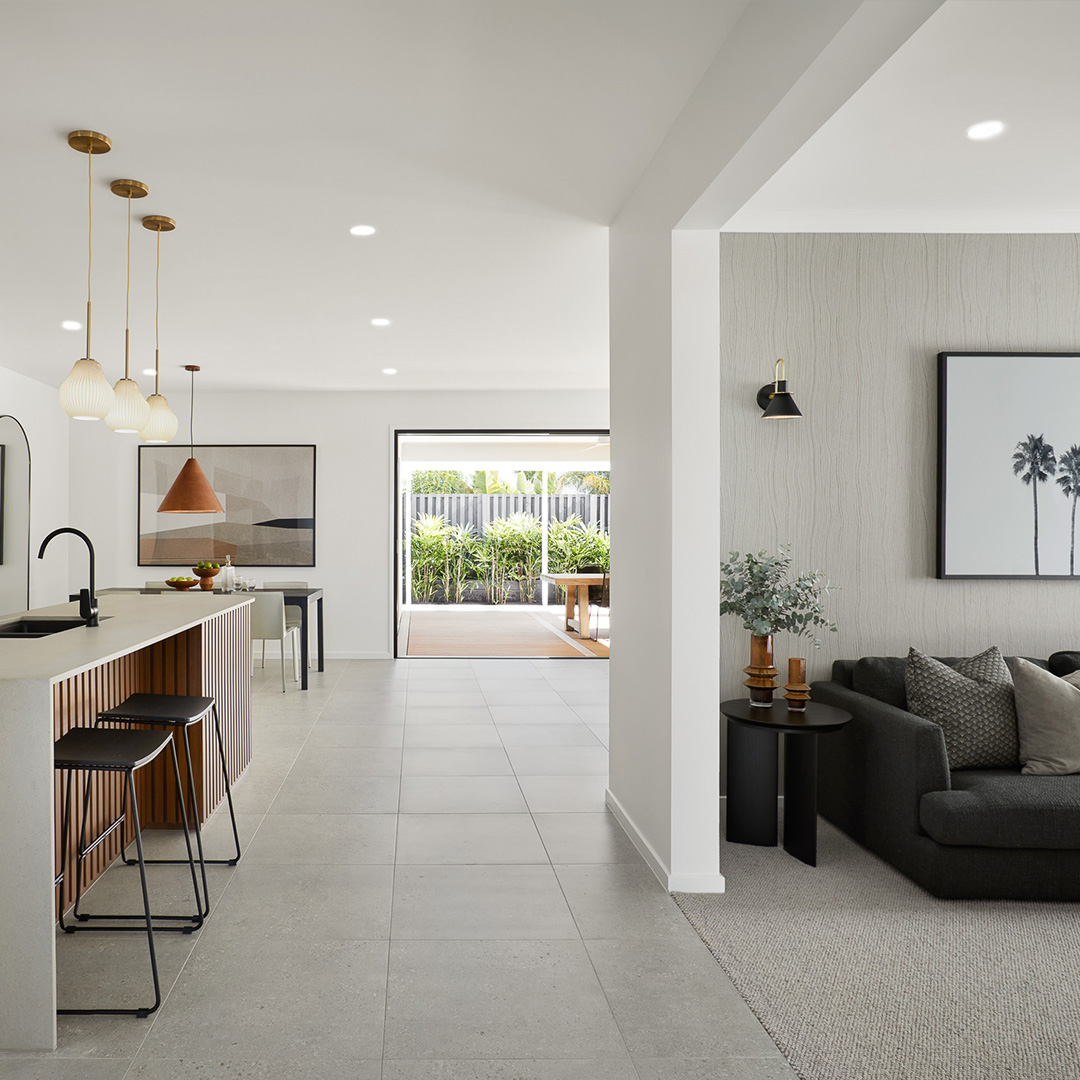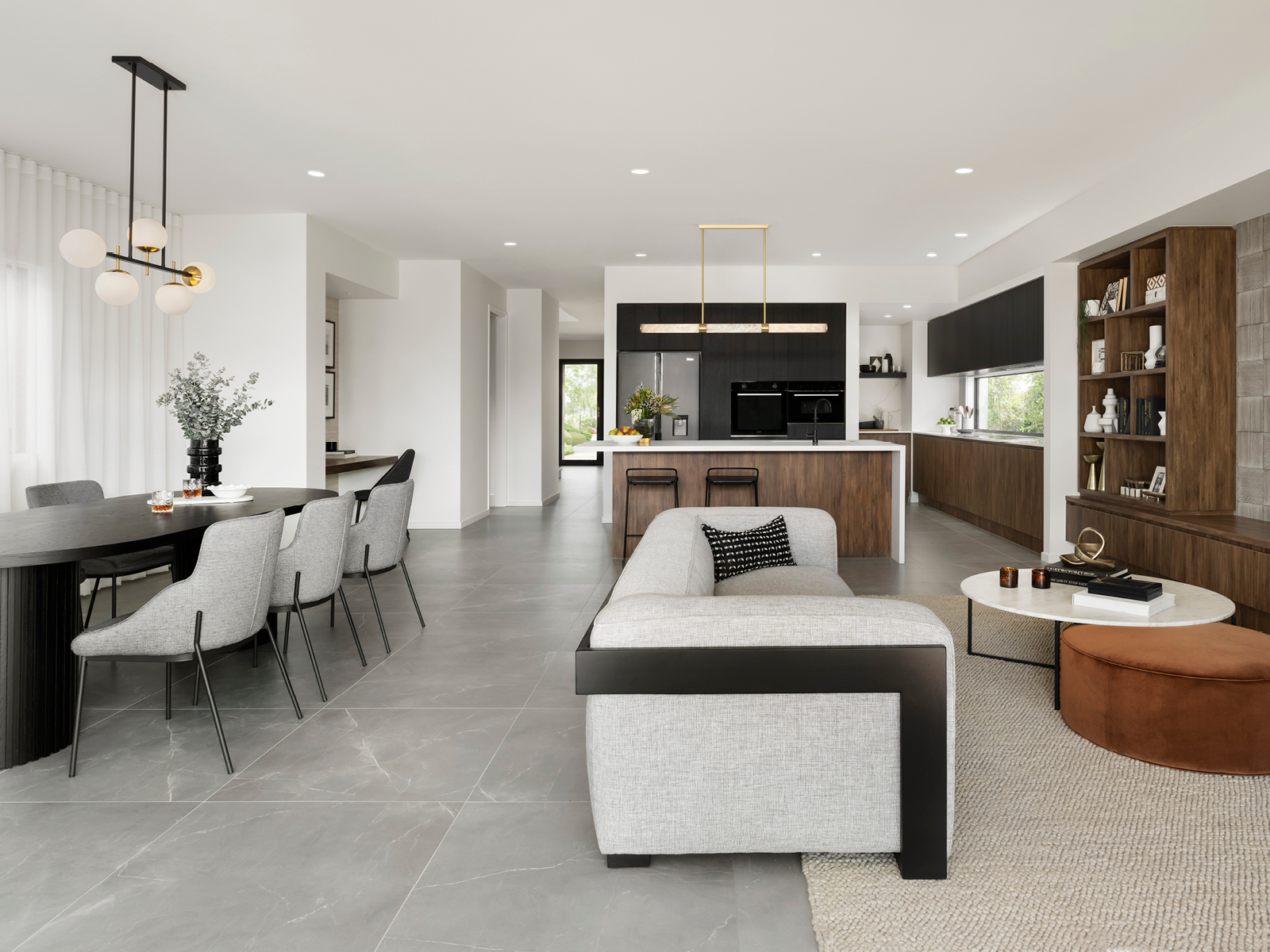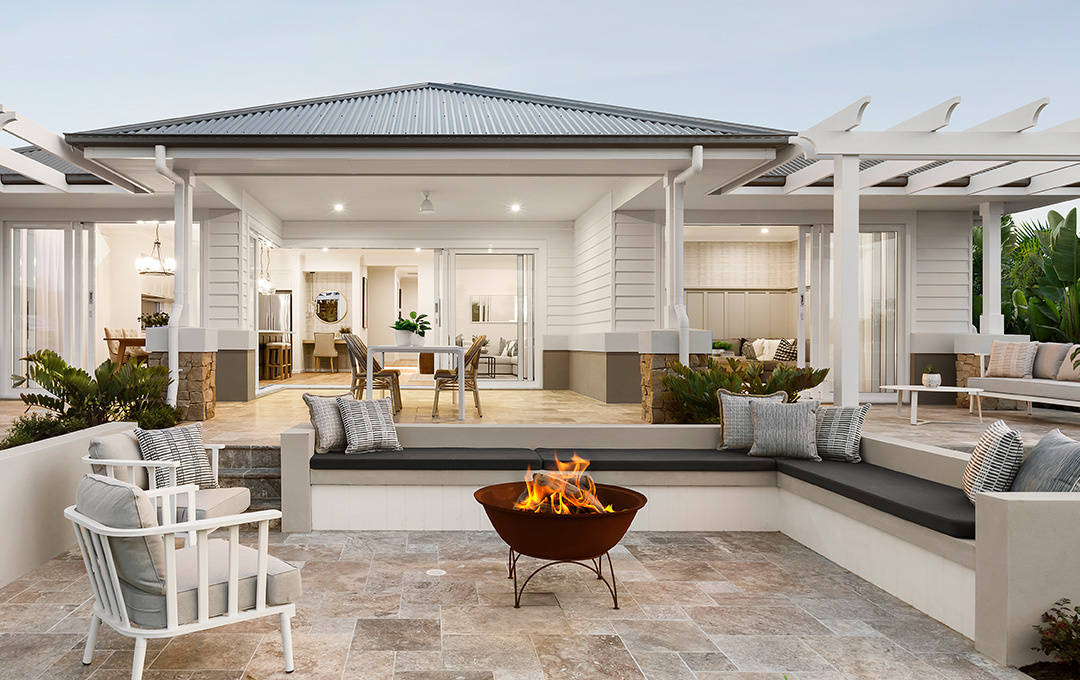1. Space Requirements
The amount of space you need is a primary consideration. A single-storey home – such as our Lisbon Series – offers quick accessibility to all parts of the home, making it ideal for families with young children, downsizers, or smaller households. On the other hand, if you’re limited by the width of your land, a double-storey home like the Sacramento Series can maximise the use of vertical space and provide more room for a larger yard or garden.
2. Lifestyle and Family Dynamics
Consider your current and future family dynamics. If you have or plan to have a growing family, a double-storey home can provide the necessary privacy by separating bedrooms from common areas. It can also offer designated spaces for various activities, such as a home office or entertainment room. Conversely, a single-storey layout ensures everyone is on the same level, fostering a sense of togetherness and making supervision easier.

3. Views and Privacy
If your property offers breathtaking views, a double-storey design might be the way to go. With elevated living areas, you can take full advantage of scenic vistas. However, keep in mind that a second floor might compromise some level of privacy, especially if neighbouring homes are close. A single-storey design can provide more seclusion and a direct connection to outdoor spaces.
4. Future Accessibility
Considering long-term accessibility is crucial, especially if you plan to live in your home as you age. A single-storey home naturally eliminates the need for stairs, making it a more age-friendly option. However, if stairs aren’t an issue for you and you’d like to keep bedrooms separate from the main living areas, a double-storey home can still be a suitable choice.
5. Budget Considerations
Your budget plays a significant role in this decision. While a double-storey home might offer more space, it’s generally more expensive to build due to additional construction costs, such as a stronger foundation and staircase. A single-storey home can be more cost-effective, but keep in mind that a larger footprint might require a larger plot of land.
6. Resale Value
Consider the preferences of potential future buyers. In some markets, double-storey homes might have a higher resale value due to their appeal to larger families and the perceived luxury of having multiple levels. However, in areas with an aging population, single-storey homes might be in higher demand.

7. Local Regulations and Site Conditions
Before making a decision, research local building regulations and site conditions. Some areas might have height restrictions or zoning regulations that impact your options. Additionally, the condition of your land and its suitability for a multi-storey build can influence your choice.
Final Thoughts
Deciding between a single-storey and double-storey home is a crucial step in your home-building journey. Consider your space requirements, family dynamics, lifestyle preferences, budget, and long-term needs when making your choice. Consulting with a reputable builder and design professionals can also provide invaluable insights to help you make the right decision. At Coral Homes, we’re dedicated to helping you create a home that perfectly suits your vision and lifestyle. Whatever you choose, make sure it’s a decision that resonates with your unique needs and aspirations. Happy building!

